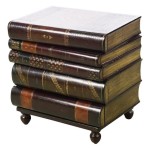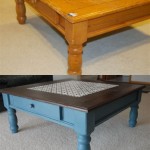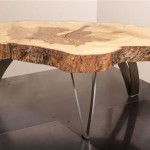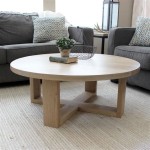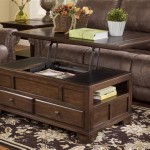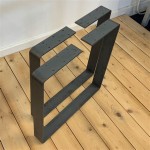What Is The Best Size For a Coffee Table?
Determining the optimal size for a coffee table is crucial for achieving both aesthetic harmony and functional usability within a living space. The "best" size is not a fixed measurement but rather a relational concept, dependent on the dimensions of the surrounding furniture, the room's overall scale, and the intended purpose of the table. A well-chosen coffee table enhances the visual appeal of the room while providing a convenient surface for drinks, books, and decorative items. Conversely, a poorly sized table can disrupt the flow of the space, making it feel cramped or disproportionate.
Several factors contribute to determining the ideal coffee table size. These include the length and height of the sofa, the available space in the room, and the intended use of the table. Consideration should also be given to the shape of the coffee table and how it interacts with the room's layout and existing furniture.
Matching Coffee Table Length to Sofa Length
A fundamental principle in selecting a coffee table size is to ensure it is proportionally related to the length of the sofa. A coffee table that is too small will look insignificant and may not provide adequate surface area for its intended purpose. Conversely, a table that is too large will overwhelm the sofa and make the room feel cramped.
As a general guideline, the length of the coffee table should be approximately two-thirds to three-quarters the length of the sofa. For instance, if a sofa is 84 inches long, the ideal coffee table length would be between 56 and 63 inches. This proportion creates a visually balanced composition that complements the sofa without dominating the space. This guideline primarily applies to rectangular or oval coffee tables. If opting for a round or square table, consider the diameter or side length in relation to the sofa's length; a smaller proportion might be acceptable due to differing visual impact compared to elongated shapes.
It's important to consider the style of the sofa as well. A more substantial, heavily upholstered sofa might benefit from a slightly larger coffee table to maintain visual balance. Conversely, a minimalist or sleek sofa might pair better with a slightly smaller table to avoid overwhelming the space. The overall goal is to achieve a harmonious relationship between the two pieces of furniture.
Furthermore, consider the placement of other furniture in the room. If there are adjacent chairs or loveseats, the coffee table's length should also be considered in relation to these pieces to maintain a cohesive and balanced arrangement. Avoid crowding the space by selecting a table that extends too close to other seating options.
Determining the Ideal Coffee Table Height
The height of a coffee table is another crucial factor influencing its functionality and aesthetic appeal. The ideal height is typically dictated by the height of the sofa's seat cushions. A coffee table that is too low can be difficult to reach and may not provide a comfortable surface for setting down drinks or other items. A table that is too high can feel awkward and block the view of the sofa or other furniture.
Ideally, the coffee table should be the same height as the sofa's seat cushions or no more than one or two inches lower. This allows for easy access to the table from a seated position. For sofas with lower seat cushions, a coffee table with a height of 16 to 18 inches may be appropriate. For sofas with taller seat cushions, a coffee table with a height of 18 to 20 inches or even slightly higher may be more suitable.
In some cases, a higher coffee table can be desirable. This is particularly true if the coffee table is intended to serve as a surface for dining or working. In such instances, a table with a height closer to that of a dining table (around 28 to 30 inches) may be preferable. However, this type of table is often referred to as a "cocktail table" or "lift-top coffee table" and may not be suitable for all living spaces.
Consider the lifestyle of the occupants. Households with young children might prefer a lower coffee table to minimize the risk of falls and injuries. Similarly, individuals with mobility issues might benefit from a higher table that is easier to reach.
Pay attention to the style of the legs or base. Coffee tables with bulky legs or a solid base can appear visually heavier and might benefit from being slightly lower. Conversely, tables with slender legs or a more open base can appear lighter and might tolerate a slightly taller height.
Maintaining Adequate Space Around the Coffee Table
Beyond the length and height, the amount of space surrounding the coffee table is a critical consideration. Adequate space allows for comfortable movement around the room and prevents the space from feeling cluttered or cramped. Insufficient space can impede traffic flow and make it difficult to access other furniture.
As a general rule, there should be at least 18 inches of space between the coffee table and the sofa. This allows for comfortable legroom and prevents individuals from feeling constrained while seated on the sofa. Similarly, there should be at least 18 inches of space between the coffee table and any other furniture in the room, such as chairs, loveseats, or entertainment centers.
Consider the traffic patterns in the room. If the coffee table is situated in a high-traffic area, such as a walkway between two doorways, it may be necessary to increase the amount of space surrounding the table to facilitate easy passage. In such instances, at least 24 inches of space may be preferable.
The shape of the coffee table can also influence the amount of space required. Round or oval coffee tables can often fit into tighter spaces more easily than rectangular or square tables, as their curved edges allow for more fluid movement around the table. However, it's still important to maintain adequate clearance to avoid bumping into the table.
Account for any rugs or carpeting in the room. If the coffee table is placed on a rug, ensure that the rug is large enough to accommodate all four legs of the table. A rug that is too small can make the table appear out of proportion and can create a tripping hazard. The rug should also extend beyond the edges of the sofa and other furniture to anchor the seating area and create a cohesive visual space.
Finally, consider the overall size of the room. In smaller rooms, it may be necessary to opt for a smaller coffee table or to eliminate the coffee table altogether in favor of other types of surfaces, such as side tables or C-tables. In larger rooms, a larger coffee table may be appropriate, but it's still important to maintain a balance between the size of the table and the size of the room to avoid overwhelming the space.
The optimal size for a coffee table is not a universal measurement. It is a contextual decision that must be made based on careful consideration of the sofa's dimensions, the room's overall scale, and the intended function of the table within the space. Selecting a coffee table requires attention to detail and an understanding of how proportions influence the overall aesthetics and functionality of a room. By following these guidelines, one can select a coffee table that enhances the beauty and comfort of their living space.

Coffee Table Dimensions How To Choose The Right Size Tidbits Twine

How To Choose A Coffee Table Or Ottoman Plus 15 Favorites

How Big Should A Coffee Table Be Know The Fact Houseofnur

What Shape Coffee Table Will Work Best In My Living Room Redesign

What Shape Coffee Table Will Work Best In My Living Room Redesign

Stylish Large Coffee Tables That Are Affordable Too The Homes I Have Made

Best Choice S 44in 2 Tier Modern Industrial Rectangular Wood Coffee Table W Mesh Shelf Metal Frame Brown Com

What Shape Coffee Table Will Work Best In My Living Room Redesign

Best Ing Rock Beam Top New Model Coffee Table Hotel Function Save Space Side China Restaurant Glass Made In Com

Champlain Drum Coffee Table Allmodern In 2024 Wood Pedestal
Related Posts

